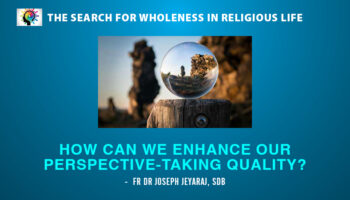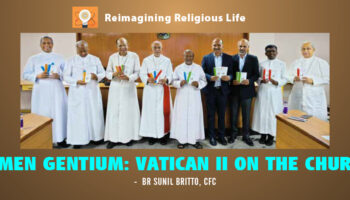DECEMBER 1
St. Charles de Foucauld (1858-1916)
Imagine a pleasure-loving, indisciplined young aristocrat who was thrown out of the army for insubordination (he insisted on keeping a mistress), explored the Sahara at age 23, and then…fell in love with God. He was fond of food and drink, and his friends in the army called him “piggy.” For one of his birthdays, the drinks were brought in a small truck! He always enjoyed going against orders. No one who knew the young Charles de Foucauld would have predicted what he would become.
Charles walked into a Catholic church one night and asked the priest: Give me the faith. The priest told him to kneel down and confess his sins to God. Charles, who had always done the opposite of what anyone ordered him to, knelt down and made his confession. Then, at the priest’s request, he received Communion.
He was a changed man from that day. He would later say that once he knew God exists, he could not do anything other than live for Him.
He went to the Holy Land. Studied the life of Jesus. Became a Trappist for three years. Left. He did not want the security and safety of the monastery. He wanted to live as Jesus had lived. For this he (a French aristocrat!) became a servant in a convent in Nazareth. Became a priest. Went to Africa, where he lived alone, seeking God. He wanted to develop a form of contemplative life which would proclaim Jesus from the rooftops, but not in words, but by deeds. He was killed by Tuareg rebels.
He died an apparent failure, with nothing accomplished and no followers. Decades later, Fr René Voillaume and four companions went from France to Africa to live the life that Charles de Foucauld had dreamt of. Out of this group would come the Little Brothers of Jesus and the Little Sisters of Jesus.
I found a small community of Little Sisters in Varanasi, just above the shore of the Ganges. I have met the Brothers. They live and work, as Jesus did, among the people, doing the ordinary jobs that most poor people do. Charles de Foucauld had written: “We must respect the least of our brothers and sisters, mingle with them, become one with them.”
—————————————————————————————————————————————————————————————
DECEMBER 2
Sr Maura Clark, Sr Ita Ford, Sr Dorothy Kazel and Miss Jean Donovan (+ 1980)
A tragic and heroic story.
They were US citizens who volunteered to work among the poor in El Salvador. The year: 1980. Archbishop Romero had been murdered for speaking up for the poor and for justice. These three Sisters (two Maryknoll nuns and an Ursuline) and their lay helper knew the risk involved in taking a stand for the poor.
They knew the danger. They refused to run away. Just a few days before their violent death, Sr Ita Ford wrote to her family what it means to be poor in El Salvador. It was more than just poverty. It meant you could be kidnapped, tortured and killed. The same fate, they knew, awaited those who worked for the poor.
Jean Donovan, the lay volunteer, was just twenty-seven, from a rich family, who had completed a business degree. She could not tear herself away from the poor children among whom she worked.
Dorothy and Jean went to pick up Maura and Ita at the airport. They were never seen again. Soldiers dressed as civilians stopped them. Took them away. Raped two of them. Killed them by shooting them in the head. Buried them in a shallow grave. Farmers found the grave, and informed the church authorities. Their bodies were exhumed; that is how the world learnt of the murder.
They did not die for professing the Christian faith in theory. (In fact, those who did the killing in El Salvador considered themselves Christians.) They translated their faith in Jesus into a stand for the poor. That is what led to their slaughter. Those who worship money and power brook no opposition.
——————————————————————————————————————————————————————————————–
DECEMBER 7
St. Ambrose (339-397)
If you had lived in Milan at the time of Ambrose, you would probably have exclaimed: What a man! What an extraordinary bishop!
In fact, the emperor whom Bishop Ambrose confronted for his massacre of innocent citizens, did public penance as Ambrose had told him to. He said this about the fearless bishop: “I know no one who deserves the name of bishop, except Ambrose.”
Who was Ambrose? Why is he so admired?
Son of a high-ranking official in the Roman empire, Ambrose had become governor of Milan, the imperial capital. The local church was strongly divided between Catholics and Arianists (a heretical group). As the two groups met for the election of the new bishop, the strife was so severe, the governor intervened to keep the peace. So impressed was the crowd that they shouted: “Ambrose for bishop!”
Ambrose, totally shocked, tried to run away and hide. When discovered, he finally acquiesced. He was not yet baptized. So, in a few days, he was baptized, confirmed, ordained a priest and made bishop of Milan!
He became a model bishop and a very courageous pastor. He gave away his property, cared for the poor, and studied at night. He learnt the Bible assiduously and became an outstanding preacher. In fact, a still more famous churchman was impressed and influenced by his preaching—St. Augustine.
As for courage, he opposed Emperor Valentinian’s order to hand over a church to a heretical group. Imperial troops surrounded the Cathedral, with Bishop Ambrose and the faithful trapped inside. Ambrose would not compromise his stand, which was: The emperor is in the church, not over it. The emperor yielded.
———————————————————————————————————————————————————————————————-
DECEMBER 9
Bl. Juan Diego
The pictures of Our Lady we are used to seeing, even in India or other Asian countries, are pictures of European women—often friends of the Italian or German or Dutch artists who painted those images. We are so used to seeing such images that we think of Mary as a European woman, which she was not. (The same goes our common portraits of Jesus.)
Have you seen pictures of Our Lady of Guadalupe? She is no European. She has the dark complexion, features and dress of the native Mexicans of the sixteenth century. How did this come about?
It goes back to a poor “Indian” (Native American) of Mexico, who, one day, on his way to church saw a young woman, who asked him to go to the bishop and tell him to build a church. The bishop, of course, refused to take this poor man (Juan Diego) seriously. This happened again, and once again the bishop did not relent. He further told him that he would listen, if the lady gave him a sign.
The sign came during the next visit. The maiden appeared once again to Juan Diego, showed him roses to take to the bishop—it was not a season for roses—and told him to collect them. Juan gathered the roses in his cape, and went to meet the bishop. When he opened his cape to give the roses to the bishop, both found the young woman’s image imprinted on his cape. This is the image venerated as Our Lady of Guadalupe.
A church was built on that spot, and has become a magnet attracting millions of pilgrims.
It was the time of the Spanish conquest of South America. The Spaniards treated the native inhabitants cruelly, despised them, and never saw them as human beings like themselves.
Our Lady appeared to one of the despised “dark” persons, not to a European colonizer. She assumed the appearance of a native woman, not that of the ruling colonizers. She spoke to Juan Diego in his dialect, not in the language of the conquerors (Spanish).
Juan Diego was a weak and frightened man, a nobody in the church or society of the time. Mary would speak to him tenderly, telling him: “Do not be afraid or upset. Am I not here, I who am your mother? Are you not in my lap? Let nothing upset you.”
The Church honours Juan Diego’s memory on this day.

To subscribe to the magazine Contact Us





